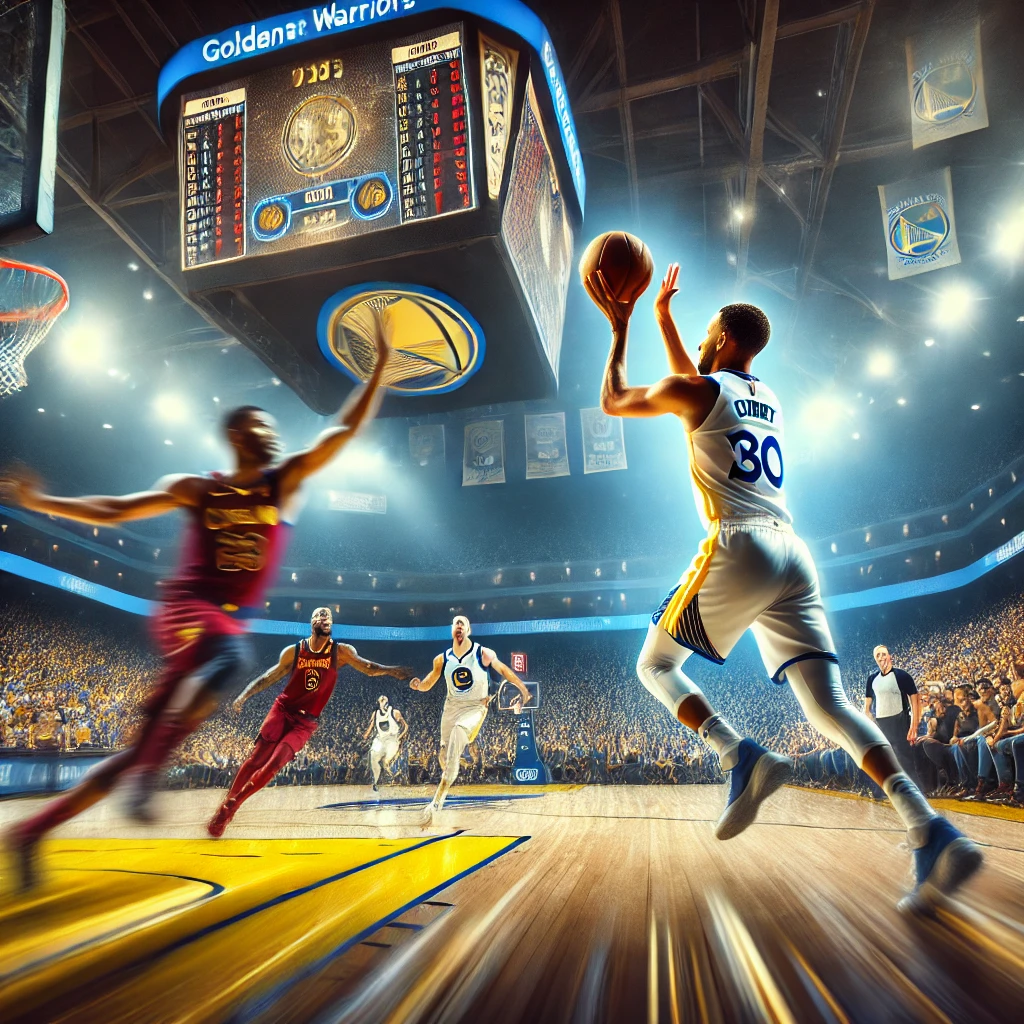The rivalry between the Golden State Warriors and Cleveland Cavaliers has been one of the most thrilling in modern basketball history. Golden State Warriors VS Cleveland Cavaliers Match Player Stats Their head-to-head clashes, especially in the NBA Finals, have cemented their places as two of the most competitive teams in the league. Fans eagerly anticipate every encounter between these teams, and each game delivers exhilarating performances, jaw-dropping highlights, and intense player battles.
One of the best ways to analyze any match is by delving into player statistics. Player stats give insight into individual performances, team strengths, weaknesses, and game trends. Metrics such as points scored, assists, rebounds, turnovers, shooting percentages, and defensive efficiency paint a complete picture of how the game unfolded. Advanced analytics, including Player Efficiency Rating (PER), Win Shares, and Box Plus/Minus (BPM), offer deeper insights into each player’s contributions beyond the box score.
In this article, we will break down the match statistics, compare key players, analyze the turning points, and highlight how individual performances shaped the game’s outcome. Golden State Warriors VS Cleveland Cavaliers Match Player Stats Whether you’re a basketball analyst, a casual NBA fan, or a fantasy basketball enthusiast, this deep dive will give you everything you need to know about the latest Warriors vs. Cavaliers showdown.
Team Performance Overview

When it comes to team matchups, both the Warriors and Cavaliers have distinct playing styles. The Warriors thrive on three-point shooting, fast-paced offense, and elite ball movement, whereas the Cavaliers rely on a balanced attack, aggressive defense, and inside scoring. This difference in approach is evident in their statistics. Golden State Warriors VS Cleveland Cavaliers Match Player Stats.
In the most recent encounter, the Warriors had a strong shooting performance, recording a field goal percentage of 48%, while the Cavaliers struggled slightly with 43% shooting efficiency. Golden State’s three-point shooting was a game-changer, hitting over 40% of their attempts from deep, while the Cavaliers landed around 34% of their shots from beyond the arc.
On the defensive end, the Cavaliers had an edge in rebounding, grabbing 50 total rebounds compared to the Warriors’ 45. This was largely due to the presence of Jarrett Allen and Evan Mobley, who dominated the paint. The Warriors, however, made up for this by forcing more turnovers and capitalizing on fast-break points.
Ball movement was another major difference. Golden State recorded 30 assists, demonstrating their trademark pass-heavy offense. Cleveland, on the other hand, had 22 assists, relying more on isolation plays and individual scoring efforts.
Star Player Stats Breakdown
Golden State Warriors Key Players

- Stephen Curry: The Warriors’ MVP delivered another stellar performance, scoring 32 points while shooting 50% from the field and 44% from three-point range. He also contributed 7 assists and 5 rebounds, showcasing his all-around impact.
- Klay Thompson: Though not as explosive, Thompson added 22 points, including some clutch three-pointers in the fourth quarter. His defense on the perimeter also played a crucial role in limiting Cleveland’s scoring opportunities.
- Draymond Green: Green wasn’t the top scorer but had an immense defensive impact with 10 rebounds, 6 assists, and 3 steals. His ability to orchestrate plays and disrupt Cleveland’s offense was invaluable.
Cleveland Cavaliers Key Players
- Donovan Mitchell: As Cleveland’s primary scorer, Mitchell led with 29 points, though he struggled from deep, making only 3 of 10 three-point attempts. His defensive presence and leadership kept the Cavaliers competitive.
- Darius Garland: Garland’s playmaking was a bright spot, contributing 18 points and 9 assists. His ability to create shots for teammates helped keep Cleveland in the game.
- Evan Mobley & Jarrett Allen: The duo combined for 28 points and 20 rebounds, dominating inside the paint and challenging Golden State’s interior defense.
Statistical Comparison: Warriors vs. Cavaliers
- Field Goal Percentage: Warriors (48%) vs. Cavaliers (43%)
- Three-Point Shooting: Warriors (40%) vs. Cavaliers (34%)
- Rebounds: Warriors (45) vs. Cavaliers (50)
- Assists: Warriors (30) vs. Cavaliers (22)
- Turnovers: Warriors (12) vs. Cavaliers (15)
These statistics show that while the Cavaliers controlled the rebounding battle, the Warriors dominated in efficiency and ball movement, which proved to be the deciding factor in the match.
Key Moments and Game-Changing Plays
Basketball games are often decided by a few key moments, and this matchup was no exception. The Warriors took control late in the third quarter, going on a 12-2 scoring run that put them in the lead. This momentum was sparked by back-to-back three-pointers from Curry and Thompson, forcing Cleveland to call a timeout.
Another critical moment occurred in the final two minutes, when the Cavaliers were down by four points. Donovan Mitchell drove to the basket for a layup but was blocked by Draymond Green, leading to a fast-break three-pointer by Andrew Wiggins, sealing the game for Golden State.
Advanced Metrics and Analytics
- Player Efficiency Rating (PER): Stephen Curry had the highest PER of 28.5, indicating his dominance.
- Usage Rate: Mitchell had a 32% usage rate, showing his role as Cleveland’s primary scorer.
- Defensive Rating: Draymond Green led all players with a defensive rating of 98, showcasing his impact.
These advanced stats provide further insight into why certain players had a greater influence on the game.
Takeaways and Future Implications
This match highlighted the Warriors’ ability to execute in clutch moments and the Cavaliers’ need for better perimeter shooting. Going forward:
- The Warriors will look to maintain their efficiency from deep and improve rebounding.
- The Cavaliers need to work on ball movement and three-point shooting consistency to match elite offenses.
Both teams are expected to remain strong contenders, and their future encounters will be highly anticipated.
Conclusion
The latest showdown between the Golden State Warriors and Cleveland Cavaliers provided everything a basketball fan could ask for—elite performances, game-changing plays, and statistical insights. While the Warriors’ superior shooting and playmaking gave them the edge, the Cavaliers’ defensive resilience and inside presence showed their potential for future wins.
Basketball is more than just scoring; defense, efficiency, and team coordination play a vital role. Golden State Warriors VS Cleveland Cavaliers Match Player Stats This match proved that every stat matters, from shooting percentages to turnovers and defensive ratings. As both teams gear up for future games, fans can expect more thrilling battles in this legendary rivalry.
Frequently Asked Questions (FAQs)
Who was the top scorer in the match?
- Stephen Curry led all scorers with 32 points.
Which team had a better shooting percentage?
- The Warriors had a 48% field goal percentage, compared to 43% for the Cavaliers.
What was the biggest turning point of the game?
- The third-quarter scoring run by the Warriors, led by Curry and Thompson.
How did Donovan Mitchell perform?
- Mitchell scored 29 points but struggled from three-point range.
What were the key advanced stats from the game?
- Curry had the highest PER (28.5), and Draymond Green had the best defensive rating (98).






